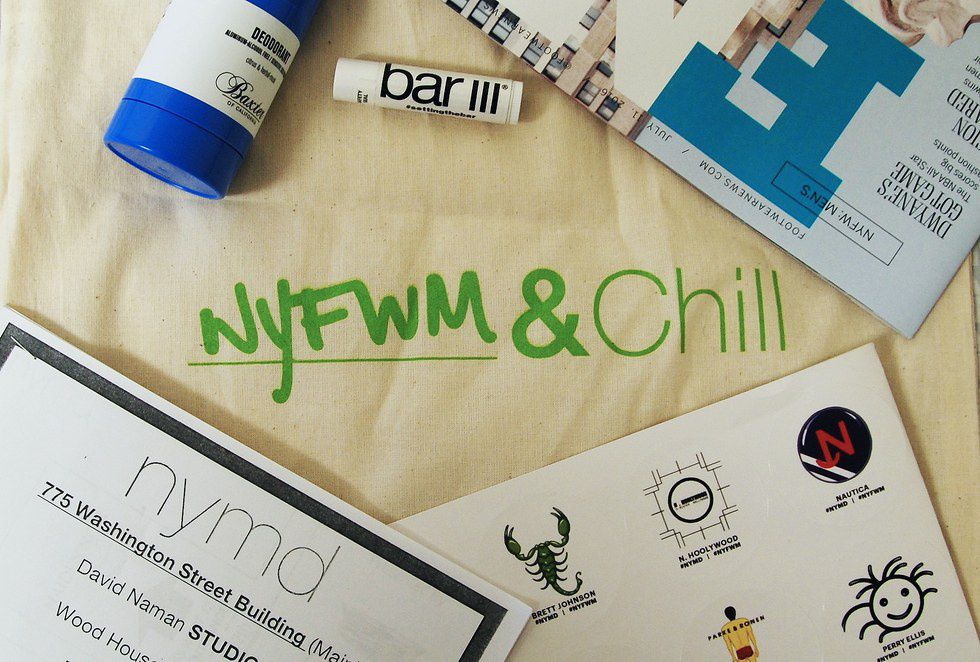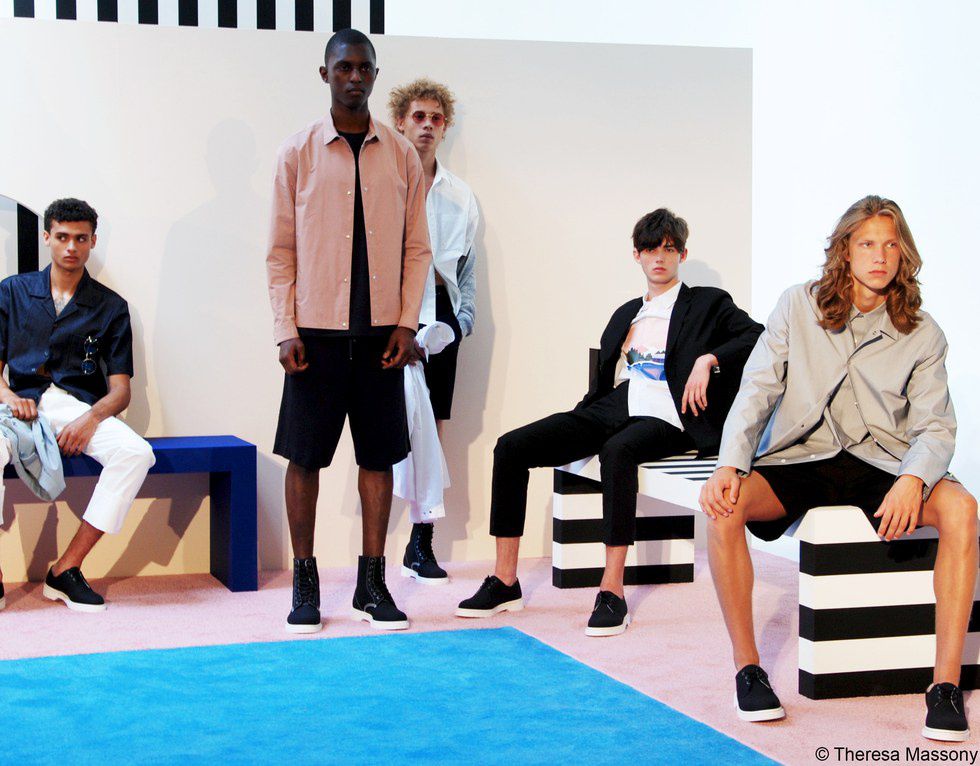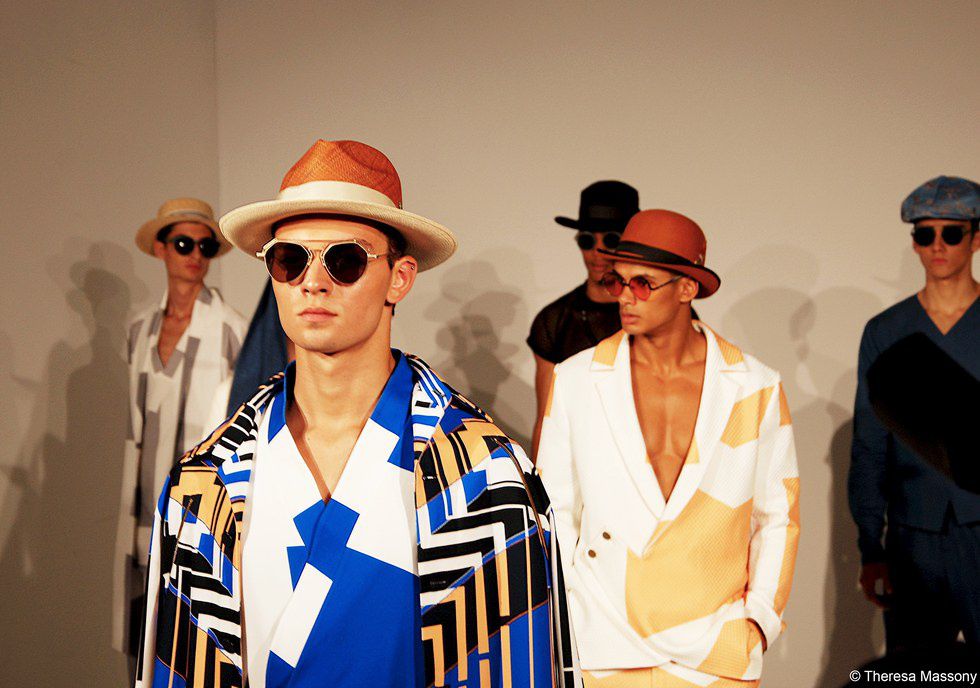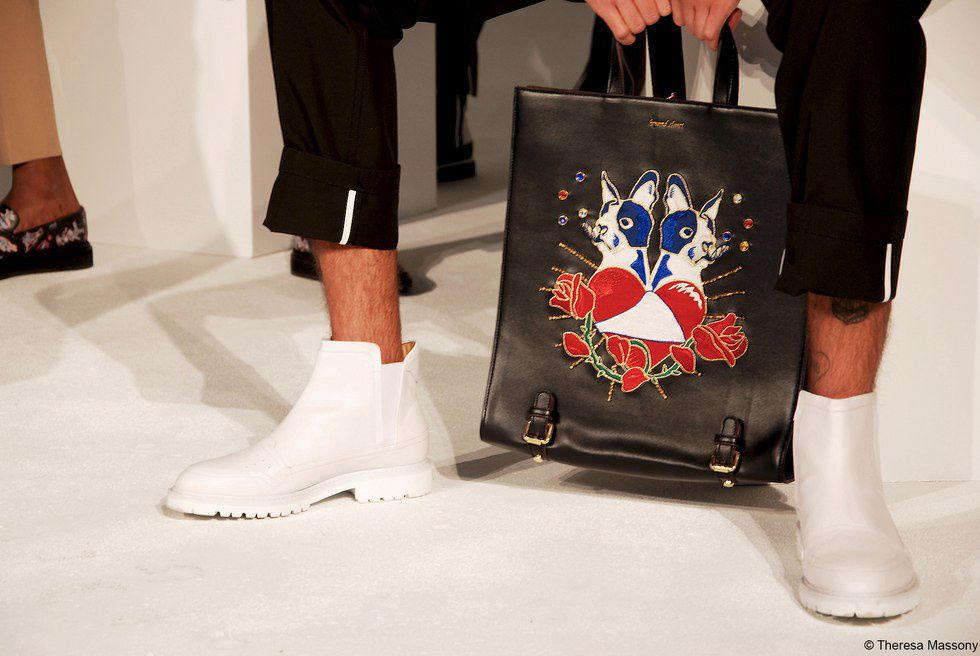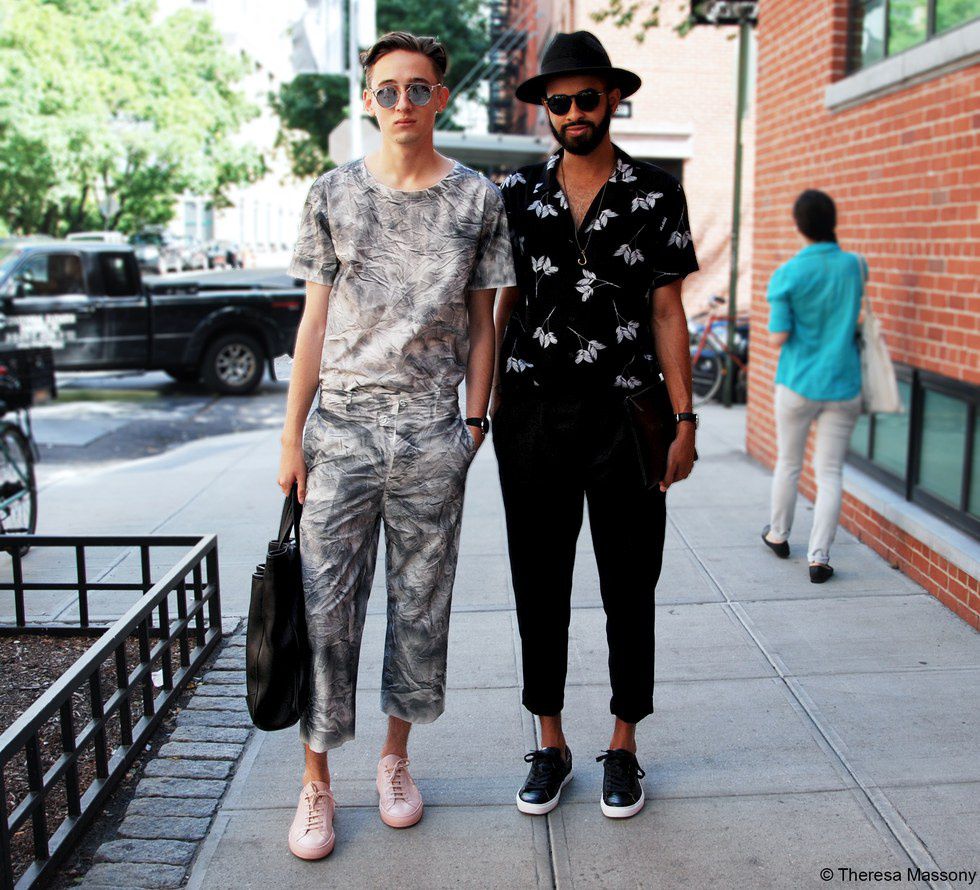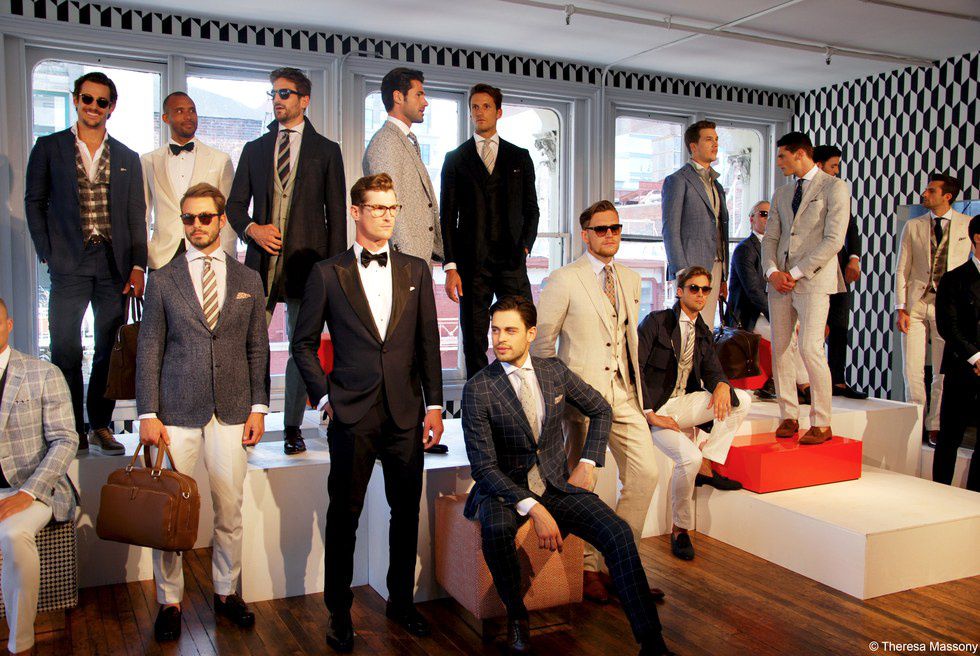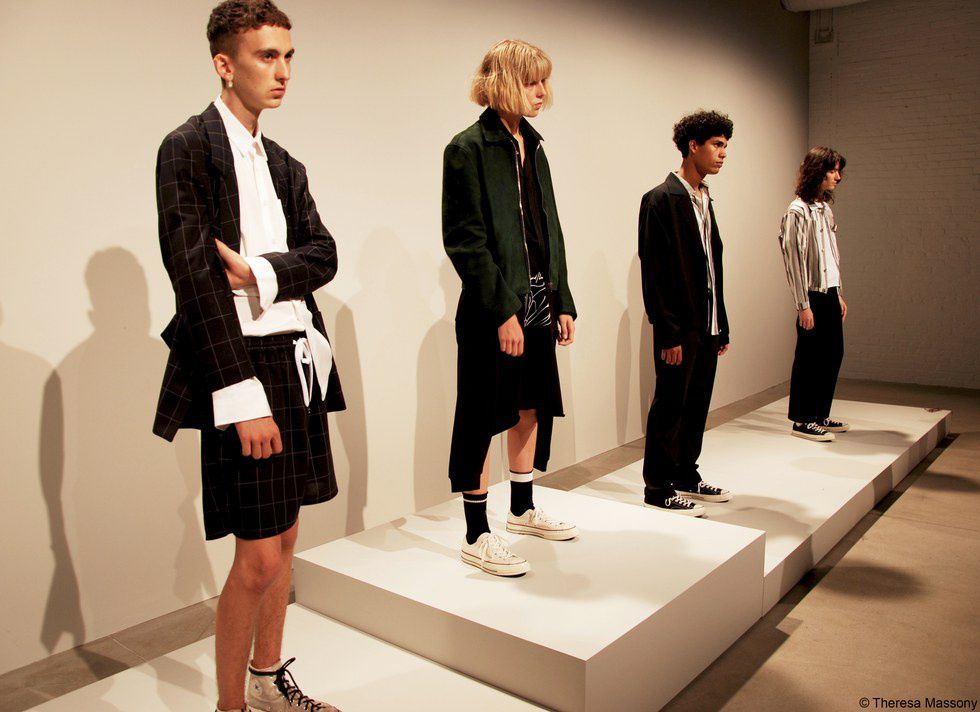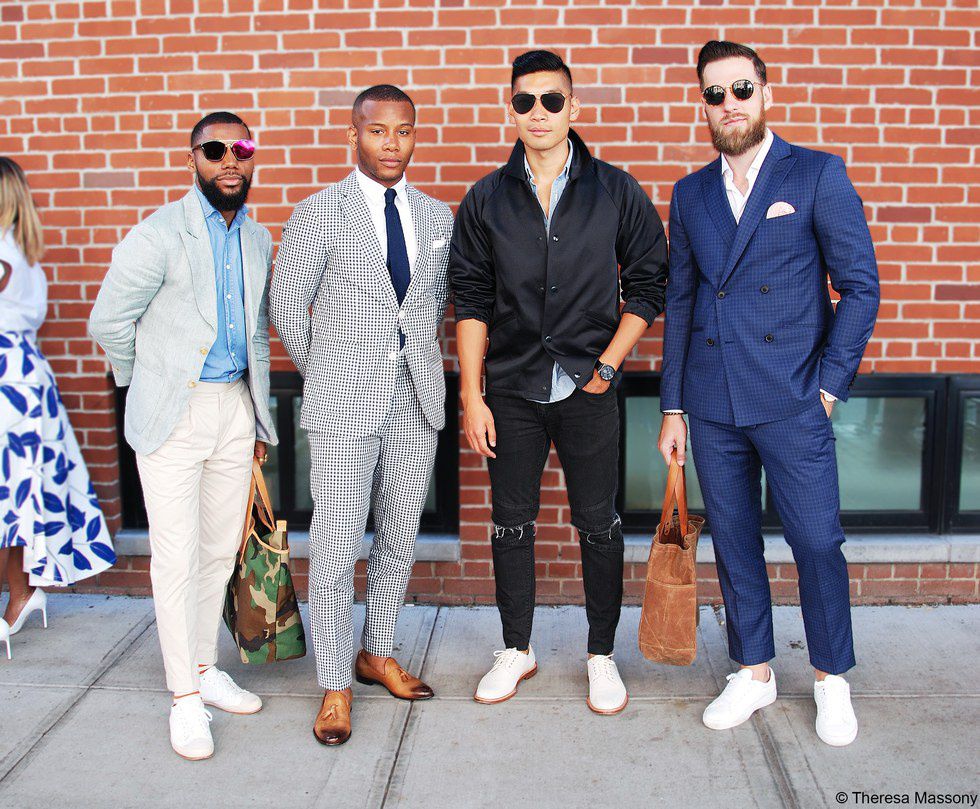Along with a jumble of initial thoughts and the desire to sleep for at least seven days straight, the culmination of this season's Men's Fashion Week brings with it a wealth of new knowledge to the layperson. Between juggling photography and social media so as not to miss a moment of fashion, here are a few valuable lessons I learned along the way:
Yes, New York Fashion Week: Men's is allotted it's own week.
I’ll be the first to admit that before this summer, I had no idea that “New York Fashion Week: Men’s” (NYFWM) was its own separate entity. Of course, I had heard of the typical New York Fashion Week--a week of runway shows populated by a whirlwind of editors, influencers, designers, purchasers and these majestic creatures that call themselves models but are actually mystical unicorns full of magic and wonder. Well, that last part has yet to be confirmed pending further research of models and unicorns.
Granted, it is true that some prominent menswear designers are choosing to show at the regular NYFW. However, Men’s Fashion Week is still bustling with shows from all the menswear designers you know and love—Tommy Hilfiger, Nautica and Suit Supply to name a few—and even more up and coming brands.
There's a current move toward more fashion presentations rather than runway shows in the men's sector.
In terms of actual runway shows, a growing number of designers are stepping away from the runway in favor of more stationary presentations. Models are positioned in a range of simple or elaborate formations, either sitting or standing, and thus attendees, buyers especially, can better view individual pieces and the collection as a whole.
The commercial aspect of fashion shows seems to be taking over in this respect. With global sales for men's apparel expecting an increase to almost $480 billion in the next four years, it makes sense that designers are turning toward commerce. Even Stephen Kolb, CFDA President, told the NY Times, "Unless ultimately people want to buy and wear what you design, what’s the point? We want it to be about selling, about growing businesses. I don’t have any shame about commerce. I’ll fly the commerce flag."
There's a reason you don't see the runway styles making their way to the streets in full form.
Unless you're Kanye West or another millionaire fashion aficionado, the more outrageous styles seen populating the runway likely aren't populating your closet. Since collections made for runway shows and presentations tend to lend themselves to the vision of the designer, wearability will sometimes take a backseat to creative expression or to telling a story.
Mainstream clothing sold in shops tends to emphasize efficiency, comfortability and everyday use. To reach across both markets, some designers develop ready-to-wear collections (RTW) that still feature creative pieces; however, these looks will often transfer much more seamlessly from runway to rack.
It's not until seeing these crazy outfits up close that you actually want to wear them.
Speaking of avant-garde outfits, seeing them up close and in the setting for which they're designed paints them in a completely different light. After years of glimpses at these wild garments through a computer screen, devoid of all prior fashion week experience, naturally I would think "where would I (or anyone else for that matter) wear this?"
Having been caught up in the NYFWM whirlwind this past week, I have a newfound appreciation for the avant-garde. Being immersed in a setting where experimental fashion is not only allowed but encouraged absolutely makes the stranger looks seem a bit more captivating and aspirational.
All attendees don't dress to the nines.
Other than my initial excitement over the prospect of runways and peculiar outfits, one of my first reactions to the approach of NYFWM was a frantic audit of my entire closet. It ultimately ended in complete despair because there was no sign of a diamond-encrusted ball gown anywhere in my wardrobe. Fortunately for me and my breaking heart, I quickly realized that most attendees at Men's Fashion Week didn't play up the formal looks for the most part. Rather, a good portion of attendees rocked current street style trends, from sleek culottes and lace-up heels for the ladies to sneakers and sleek bomber jackets for the guys.
The nature of the designer's collection also tends to influence the look of the audience. For example, Suit Supply's presentation featured--wait for it--mostly attendees in well-tailored suits, while attendees at Ovadia & Sons mimicked the trendier street styles featured in the collection.
All of the hubbub doesn't happen in one place.
In what universe would fashion be easy? Or centrally located? That's a bit of an exaggeration, as NYFWM does center around Skylight Clarkson Square as its main headquarters. However, throughout the week, some brands featured presentations in different spots around New York City. Industria Superstudio and the Cadillac House were some of this year's hot spots for a number of presentations. If a collection calls for a certain space, then clearly we must all heed it's sweet call.
Being a model at a fashion event isn't as easy as it looks.
Standing still on a platform or walking up and down a runway in a cool outfit is easy enough, right? Wrong. In fact, the move toward stationary fashion presentations presents a new set of challenges for models.
Besides having to stand relatively still for a few hours at a time, models are also bogged down by several layers of clothing under extremely hot and bright lights. There have been a few instances of models fainting under these conditions during shows, so handlers have been taking extra precautions by consistently checking on models during the presentations, hydrating them, and switching them out for breaks if necessary.
The fashion world is indeed a small one.
It's quite hard to believe that a world seemingly so big to the outsider is actually quite small. Naturally, networks and connections run rampant in the fashion community, so seeing the same people at multiple events throughout the week should come as no surprise.
Luckily, the connections seem fairly easy to maintain, as everyone is pretty friendly. Even in an industry as notoriously cut-throat as the fashion industry, a strong-willed appreciation for the same type of creative expression is enough to keep the fervent sense of community alive. People from around the world came to New York to celebrate the latest season of men's fashion, and they'll do it again next season in what can only be described as a super stylish family reunion.




